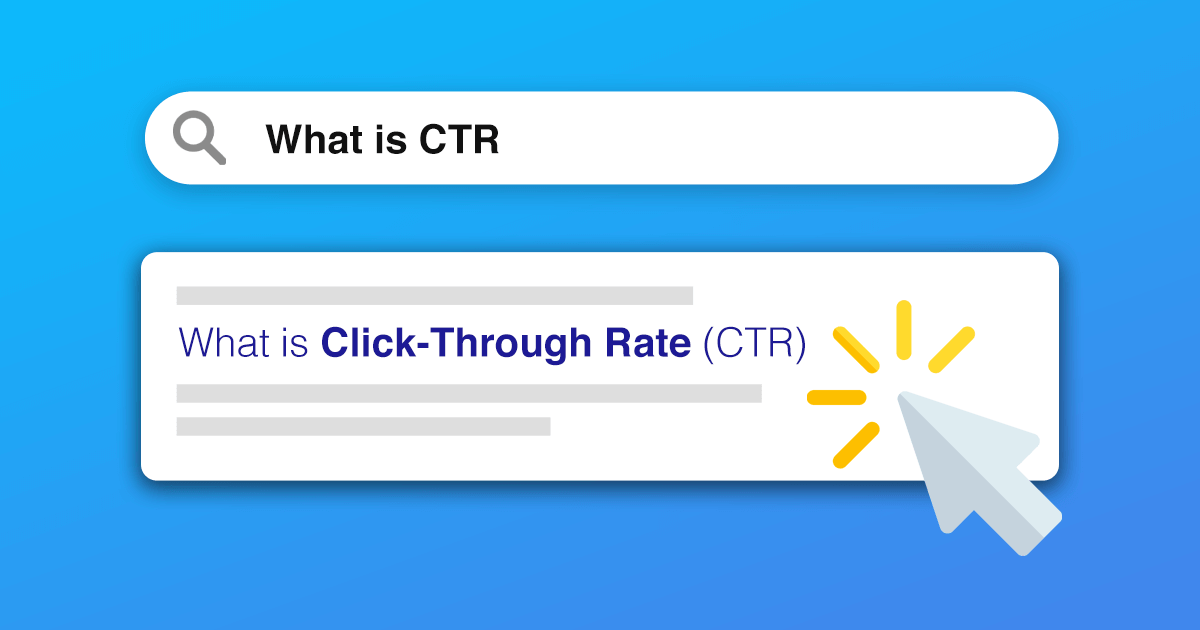CTR is most commonly used in search engine marketing, as it helps marketers understand how well their ads are performing on Search Engine Results Pages!
What is CTR?
CTR stands for click-through rate, which is the ratio of clicks to impressions for an ad or a web page. In simpler terms, it’s the percentage of people who clicked on your ad or link after seeing it.
CTR is an important indicator of the performance of digital campaigns, as it helps marketers understand how successful their efforts are at enticing people to click on their content.
It is also used to measure how well specific keywords, ads, or campaigns are performing.
By analyzing CTR data, marketers can identify areas where they need to focus their efforts and refine their strategies in order to increase the number of clicks on their digital assets.
How to Calculate CTR?
It is calculated by dividing the number of clicks between a link, advertisement, or other digital assets by the number of times it was viewed.
In other words, it measures how many people clicked on a link or ad, compared to how many people saw it.
To calculate CTR, divide the number of clicks on your ad or link by the number of impressions it received, then multiply by 100. The resulting percentage is your Click-through Rate.

For instance, if your ad received 500 impressions and 25 clicks, your CTR would be 5% (25/500*100).
Why is CTR Important?
CTR is an essential metric for evaluating the performance of your website’s content, ads, or marketing campaigns.
A higher CTR means that your content is resonating with your audience, and they find it relevant and compelling enough to click through.
A low CTR, on the other hand, indicates that your content may not be meeting your audience’s needs or expectations.
A low CTR can also lead to lower ad rankings and higher costs per click, making it crucial to optimize your CTR for better performance.
How to Improve Your CTR
Here are some tips on how to optimize your CTR and improve your website’s performance:
Use Compelling and Relevant Headlines
Your headlines are the first thing your audience sees when they come across your content or ads.
Using catchy and relevant headlines can pique their interest and entice them to click through.
Make sure your headlines accurately reflect the content of your web page or ad and use attention-grabbing words to stand out.
Optimize Your Meta Description
Your meta description is a short summary of your web page’s content that appears below the headline in Search Engine Results Pages (SERPs).
Make sure your meta description accurately reflects your page’s content, and use compelling language to entice clicks.
Use relevant keywords to make it more visible in search engine results.
Improve Your Website’s Speed
Website speed is a crucial factor in user experience and can impact your CTR.
Slow-loading pages can frustrate your audience and lead to lower engagement and CTR.
Optimize your website’s speed by compressing images, minifying code, and using caching to improve load times.
Use Compelling Visuals
Visual content such as images, videos, or infographics can increase engagement and boost your CTR.
Use relevant and high-quality visuals to complement your content and make it more appealing to your audience.
Test and Refine Your Content
Continuous testing and refining of your content can help improve your CTR over time.
A/B testing different headlines, meta descriptions, or visuals can help you determine what resonates best with your audience.
Conclusion
CTR is a crucial metric for evaluating the performance of your website’s content, ads, or marketing campaigns.
By optimizing your CTR using the tips outlined in this article, you can improve your website’s performance and achieve better results.
Remember to keep testing and refining your content to stay ahead of the competition.
